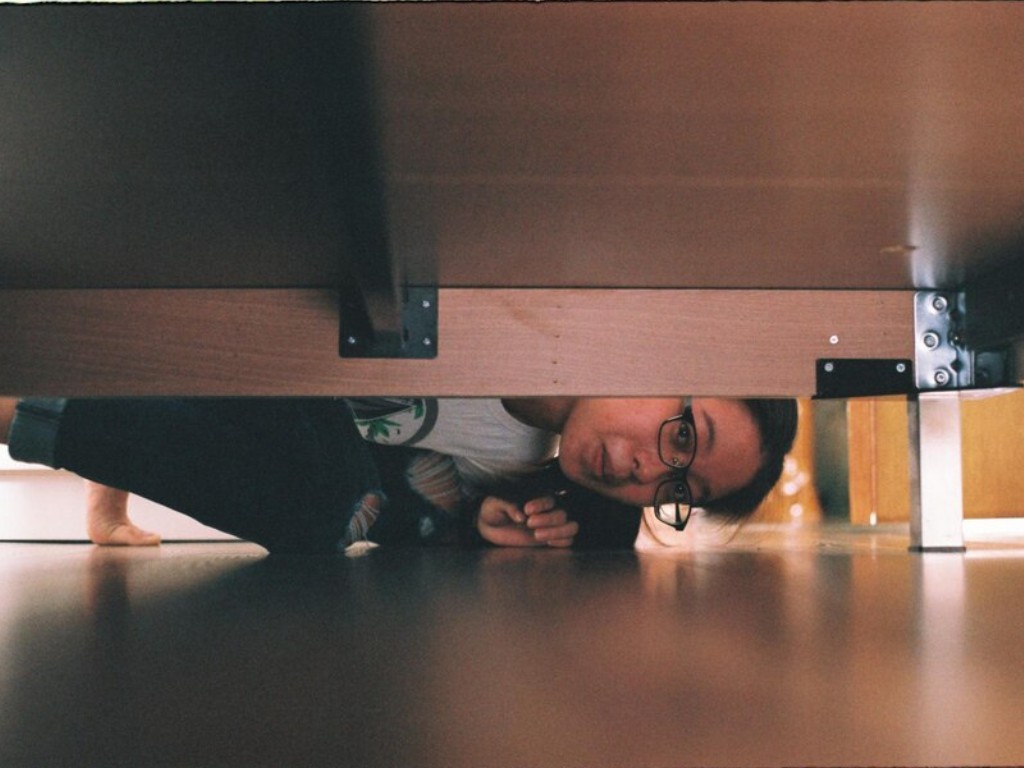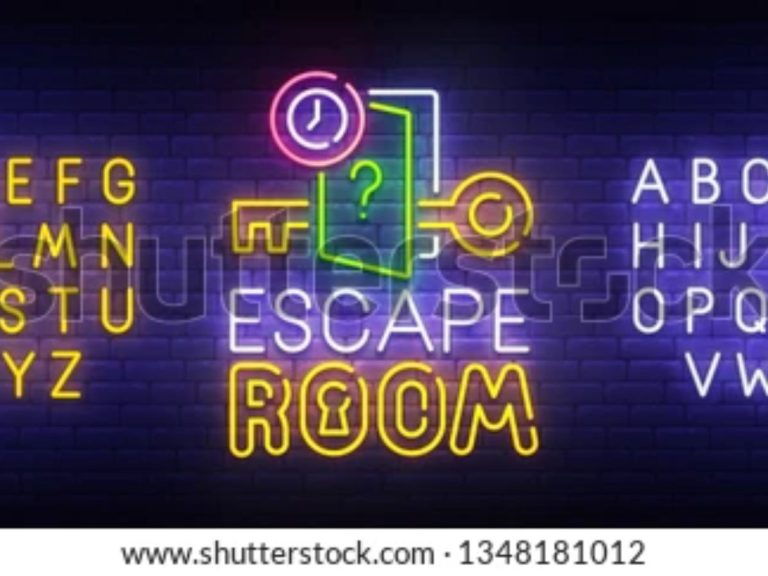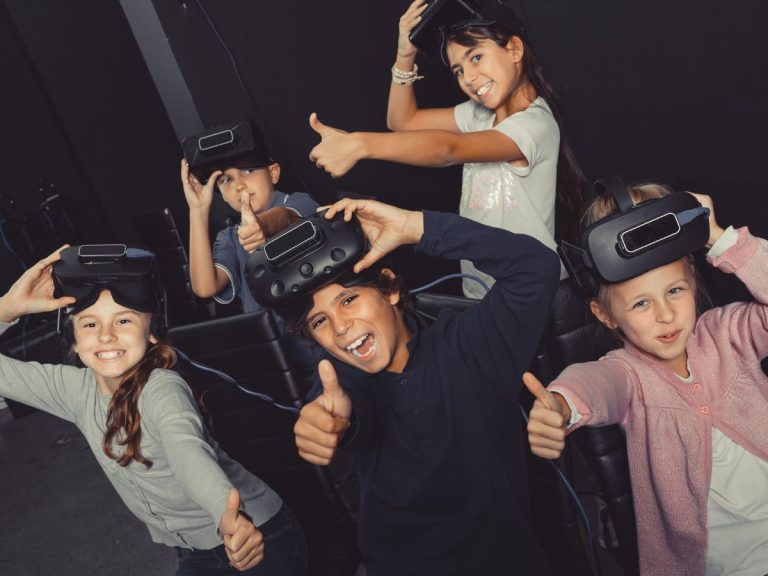Are Escape Rooms Physically Demanding?
Escape rooms have exploded in popularity as a go-to team-building activity, offering a blend of entertainment, suspense, and problem-solving.
But for first-timers or curious thrill-seekers, one question pops up often: Are escape rooms physically demanding?
Do you need to be athletic to make it out in time, or is it all just clever puzzles and group strategy?
Most escape rooms are designed to challenge your mind over muscle.
Whether you’re exploring a traditional themed room or diving into a virtual reality escape room, the focus is on thinking fast, collaborating with your team, and uncovering hidden clues.
You might do some light movement—like crouching, reaching, or flicking switches—but it’s more about solving puzzles than breaking a sweat.
In this guide, we’ll bust common myths, explore different types of challenges, and help you understand exactly what to expect, so you can book with confidence, knowing an epic escape adventure awaits, no gym membership required.
What Kind of Physical Activity Happens in an Escape Room?

Representational Image
While escape rooms are known for their mentally challenging puzzles, some also incorporate light physical activity to enhance immersion and variety.
Some escape rooms include light physical tasks such as crawling through low spaces, reaching behind furniture for hidden clues, or manipulating large props like gears and levers to activate mechanisms.
These elements are designed to enhance immersion but are rarely strenuous or physically demanding.
Most physical tasks are minimal and optional.
You won’t be asked to lift heavy objects or perform athletic feats.
Instead, these physical elements are designed to simulate the world you’re immersed in—whether it’s dodging virtual lasers, turning dials to open a vault, or passing objects between teammates under a specified time limit.
Crucially, many escape rooms offer alternative strategies or layout adjustments to accommodate different mobility levels, ensuring that physical interaction never becomes a barrier to participation.
VR Escape Rooms

Virtual reality escape rooms offer a unique twist on the traditional format by delivering all the excitement of an escape game without the need for significant physical movement.
Players remain seated or lightly mobile while immersed in highly detailed interactive adventure games that simulate everything from space missions to fantasy quests.
At Entermission Melbourne, players can enjoy multisensory VR escape games that combine sight, sound, touch, and even scent to create an unforgettable experience.
With actions like flicking switches, turning dials, and solving puzzles performed through intuitive VR controls, the experience is designed to be accessible and inclusive, perfect for individuals and teams of all fitness levels.
It’s an adrenaline rush driven by story and strategy, not stamina.
Ideal for those who crave mental challenges and immersive worlds without the physical demands.
Mentally Challenging Puzzles That Make You Sweat

Representational Image
While escape rooms may not demand intense physical exertion, they do put your problem-solving skills to the test. The real challenge lies in cracking mentally challenging puzzles, spotting patterns, and working under a specified time limit with your team.
Tasks often include decoding cryptic messages, solving riddles, arranging objects in a precise order, or connecting hidden clues scattered across the room. These activities require sharp focus, creative thinking, and seamless teamwork—which can be just as exhausting as a workout for your brain.
The pressure builds not from movement, but from the ticking clock, collaborative dynamics, and the drive to outsmart the room before time runs out.
Are Escape Rooms Physically Accessible to Everyone?
Most modern escape rooms are thoughtfully designed to be accessible for players of varying physical abilities.
While some may include optional crawling or reaching tasks, venues often provide alternative strategies or modified setups to ensure everyone can participate.
Features like wheelchair-friendly paths, wide entryways, and minimal elevation changes help accommodate individuals with physical limitations.
Many games are structured so tasks can be shared among teammates, allowing each person to contribute in their own way.
Additionally, staff are typically trained to assist or adapt scenarios in real-time, creating an inclusive experience without compromising the fun.
Whether you prefer to stay seated or have limited mobility, escape rooms remain an engaging, team-building activity for all.
How Game Masters Help You Overcome Physical Limitations
Behind every great escape experience is a skilled game master who ensures that the challenge is engaging, inclusive, and tailored to the needs of every participant.
These staff members closely monitor your progress and are trained to step in when adjustments are needed, whether it’s providing extra hints or modifying a task to suit physical abilities.
For players with limited mobility, game masters may suggest alternative approaches or swap out physically involved steps with more accessible ones.
Their role isn’t just to manage the game—it’s to ensure everyone feels supported, safe, and immersed.
With their guidance, escape rooms become less about pushing physical boundaries and more about teamwork, strategy, and creativity.
Claustrophobia and Escape Rooms: What You Need to Know

Worried about tight spaces or feeling trapped?
Many escape rooms are designed with claustrophobia and anxiety-friendly setups in mind.
Rather than forcing players into confined environments, modern escape venues often offer spacious layouts, open-door policies, and clearly marked exits.
If you’re concerned, it’s a good idea to call ahead and ask about room dimensions or choose a theme with a more open design.
Some venues also provide anxiety-friendly options, allowing players to step out or receive extra guidance if needed.
Escape rooms are about immersive fun, not discomfort. With thoughtful design and flexible gameplay, even those sensitive to enclosed spaces can enjoy the thrill without stress.
Puzzles, Riddles, and Teamwork
At the heart of every great escape room experience is teamwork.
Success hinges on how well a group collaborates, communicates, and combines their unique skills to solve puzzles, interpret clues, and beat the clock.
Players often take on different roles.
Some excel at spotting hidden items, others at decoding cryptic messages, and some at putting together abstract patterns.
Escape rooms are deliberately designed so that creativity and teamwork matter far more than physical ability.
This collaborative dynamic makes escape rooms ideal for team bonding, whether you’re playing with friends, coworkers, or family.
It’s not about who is the strongest. It’s about how well your team can think, talk, and solve challenges together.
Physical Tasks in Themed Rooms
Some themed escape rooms include light physical tasks to enhance immersion, such as crouching, reaching, or sliding open hidden compartments.
While these elements add excitement, they are typically optional and never central to the experience.
If a task involves physical movement, teams can often assign it to someone comfortable with the action or ask the game master for an alternate approach.
The focus remains on solving puzzles and engaging with the storyline, not on testing endurance.
This flexibility ensures that players of all fitness levels can enjoy the adventure without missing out on any of the fun or progress.
From Bank Vaults to Bunkers

Escape rooms often feature immersive themes like ancient temples, secretive bank vaults, or post-apocalyptic bunkers.
While the settings may suggest high-stakes missions or action-packed scenes, the actual gameplay relies more on mental challenges than physical action.
Players engage in tasks such as turning dials, flicking switches, or searching for hidden clues rather than running or climbing.
These tactile elements are designed to enhance the storyline without creating barriers for those with limited mobility.
Even in visually intense environments, the physical demands remain minimal, keeping the focus on exploration, teamwork, and puzzle-solving.
Do You Need to Be Fit to Do an Escape Room?
No special level of physical fitness is required to enjoy an escape room.
These experiences are designed to be mentally engaging and broadly accessible, not physically strenuous.
While some rooms may include mild movement like bending or reaching, there’s no running, lifting, or high-impact activity involved.
Tasks can be shared among teammates, and venues often provide accessible-for-players options to ensure everyone can participate comfortably.
Escape rooms focus mainly on brain power, collaboration, and creativity—not physical endurance.
Tips to Prepare: What to Wear, What to Expect

Comfort is key when heading into an escape room.
Wear comfortable clothes that allow easy movement, such as jeans, joggers, or breathable tops, along with flat, closed-toe shoes.
While the physical activity is light, you may need to reach, bend, or crouch as part of the immersive experience.
There’s no need for athletic wear or specialized gear.
Instead, focus on being mentally sharp, observant, and ready to collaborate with your team.
It also helps to come in with an open mind and be prepared to adapt using alternative strategies when a puzzle gets tricky.
A clear head and positive attitude will take you much further than physical strength ever could.
Common Myths About the Physical Demands of Escape Rooms
Many people assume that escape rooms are physically intense or require athleticism, but that is far from the truth.
Popular myths include needing to crawl through tight spaces, lift heavy objects, or perform stunts to escape in time.
In reality, most escape rooms are thoughtfully designed to emphasize mental challenges, strategic thinking, and effective teamwork rather than physical strength or endurance.
If a room includes a physical component, it is typically mild, clearly optional, and adaptable for players of different abilities.
There is no running, jumping, or heavy lifting involved. Just bring your curiosity, focus, and willingness to collaborate with your team.
Escape rooms are built for inclusivity, creativity, and fun, not exhaustion or physical strain.
Your Mind Does the Heavy Lifting
Escape rooms are designed to challenge your brain, spark collaboration, and deliver immersive fun.
While some themes may include light movement or interactive props, the experience is overwhelmingly mental rather than physical.
Whether you are solving puzzles in a traditional room or navigating a virtual reality escape room, the goal is not to test your fitness but to test your thinking.
With accessible layouts, optional physical elements, and adaptable gameplay, escape rooms welcome participants of all abilities.
It is not about being the fastest or the strongest.
It is about creativity, teamwork, and the thrill of the challenge. And that is what makes escape rooms an experience everyone can enjoy.



